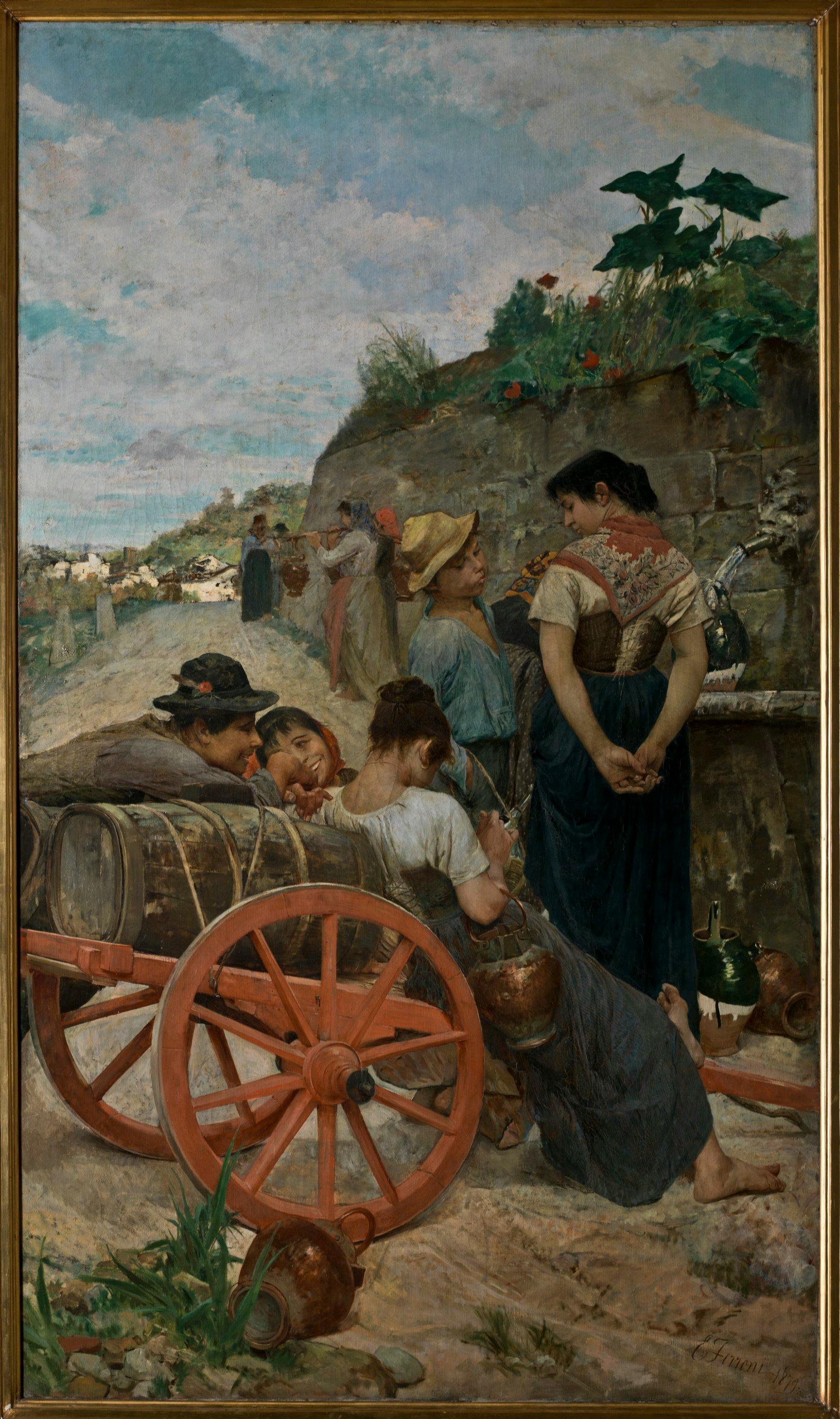At the fountain
Egisto Ferroni (Florence 1835 - 1912)
The large canvas At the fountain was presented at the National Exposition of Turin in 1880 and the following year at the Promotrice di Firenze exhibition. The painting, scorned by the official critics, was instead praised by the Tuscan artists. In particular, Adriano Cecioni, critic of the Macchiaolo movement, himself a painter and sculptor, defined it as a “grand Tuscan work”.
The composition, which appears very simple, centres around the fountain at which the country people are gathering to obtain their daily supply of water, revealing a range of different personalities and attitudes. Indeed, Ferroni displays a particular sensitivity for the psychological introspection of the humble protagonists of the so-called “field painting”. The benchmark for this current that developed between the 1870s and 1880s is French painting, and in particular that of Millet, which enriches the direct contact with the life of the country people and the work in the fields with a pathetic or popular tone not found in the rigorous formal research of the Macchaioli, but which was also an essential prerequisite for the Tuscan painters of the late 19th century.
